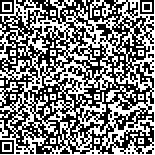| 本文已被:浏览 2818次 下载 951次 |

码上扫一扫! |
|
|
| 物理模型光谱模拟误差对冬小麦叶面积指数高光谱反演的影响 |
|
刘轲1,2, 周清波3, 吴文斌1,4, 陈仲新3, 夏天5, 王思6, 唐华俊3
|
|
1.农业部农业信息技术重点实验室/中国农业科学院农业资源与农业区划研究所,北京 100081;2.农业部遥感应用中心成都分中心/四川省农业科学院遥感应用研究所,成都 610066;3.农业部农业信息技术重点实验室/中国农业科学院农业资源与农业区划研究所,北京 100081;4.3.华中师范大学城市与环境科学学院,湖北武汉 430079;5.华中师范大学城市与环境科学学院,湖北武汉 430079;6.农业部遥感应用中心成都分中心/四川省农业科学院遥感应用研究所,成都 610066
|
|
| 摘要: |
| 获取农作物叶面积指数(leaf area index,LAI)及其动态变化对于农作物长势监测和产量估测等应用具有重要的意义。基于冠层反射率模型(物理模型)的LAI遥感反演方法具有良好的普适性,对地面数据依赖较少,近年来广泛应用于农作物LAI高光谱反演研究。然而,当物理模型参数取值尽可能准确(代入参数实测值或依据先验知识取值)时,模拟光谱与实测光谱间仍然存在误差,研究称之为“光谱模拟误差”。该研究通过比对实测冬小麦冠层光谱与ACRM(a two-layer canopy reflectance model)模型最优模拟光谱,展示了光谱模拟误差在各波段、不同样本点的分布规律。据此,根据对光谱模拟误差与高光谱数据降维的不同考虑,制订了4种LAI反演波段选择方案。通过对比基于不同波段选择方案的LAI反演精度,分析了光谱模拟误差对LAI反演的影响; 讨论了综合考虑高光谱数据降维与光谱模拟误差的LAI反演波段选择方法。通过合理的波段选择,限制了光谱模拟误差的影响,提高了LAI反演精度。该研究结果有助于探索合理的LAI高光谱反演波段选择方法,为合理利用高光谱数据反演农作物LAI提供科学参考。 |
| 关键词: 叶面积指数 LAI 高光谱 反演 光谱模拟误差 ACRM |
| DOI:10.7621/cjarrp.1005-9121.20161003 |
| 分类号: |
| 基金项目: |
|
| ERROR OF SPECTRAL SIMULATION AND ITS EFFECTS ON LAI RETRIEVAL USING HYPERSPECTRAL REMOTE SENSING |
|
Liu Ke1,2, Zhou Qingbo3, Wu Wenbing1,4, Chen Zhongxin3, Xia Tian5, Wang Si6, Tang Huajun3
|
|
1.Key Laboratory of Agri-informatics,Ministry of Agriculture/Institute of Agricultural Resources and Regional Planning,Chinese Academy of Agricultural Sciences,Beijing 100081,China;2.Chengdu Branch,Remote Sensing Application Center,Ministry of Agriculture/Institute of Remote Sensing Application,Sichuan Academy of Agricultural Science,Chengdu 610066,China;3.Key Laboratory of Agri-informatics,Ministry of Agriculture/Institute of Agricultural Resources and Regional Planning,Chinese Academy of Agricultural Sciences,Beijing 100081,China;4.3.College of Urban & Environmental Sciences,Central China Normal University,Wuhan, Hubei 430079,China;5.College of Urban & Environmental Sciences,Central China Normal University,Wuhan, Hubei 430079,China;6.Chengdu Branch,Remote Sensing Application Center,Ministry of Agriculture/Institute of Remote Sensing Application,Sichuan Academy of Agricultural Science,Chengdu 610066,China
|
| Abstract: |
| It is vitally important to know leaf area index (LAI) and its dynamics for crop growth monitoring and yield prediction. In recent years, the method of LAI estimation by inverting canopy reflectance (CR) models hasbeen widely applied because of its universality and independence from ground truths of LAI. However, even if parameterizations of CR models are tried to be accurate by substituting in-situ measurements or best estimations of variables, there are always bias between the simulated and remotely sensed spectra. In this paper such error is referred to as "error of spectral simulation"or "simulation error". Based on the in-situ measurements of winter wheat variables, ACRM (a Two-layer Canopy Reflectance Model) model is used to obtain the optimum simulated spectra. The optimum simulated spectra are compared with the in-situ measured winter wheat canopy spectra to reveal the distribution of simulation errors in different bands and in different sample plots. Four schemes of band selection are propos d and tested for retrieving LAI, in order to explore how the simulation errors affect LAI retrieval, and to discuss the principles of band selection for avoiding such affectations. Regression coefficient (R2) between estimated and measured LAIs, root mean square error (RMSE) and mean relative error (MRE) of LAI estimation are used to evaluate the accuracy and stability of LAI retrieval. The experiment shows that, first, errors of spectral simulation differ significantly in different bands. Second, the LAI estimation without considering simulation errors yields much larger MRE (14.31%) than that considered simulation errors (MRE 7.84% ~ 9.55%). However, the regression coefficients are similar (0.8512 ~ 0.8662). That means simulation errors cause significant systematic errors in estimated LAI. Nevertheless, it hardly affects the stability of LAI retrieval. Third,generally speaking, hyperspectral bands with minimum simulation errors should be selected to estimate LAI, in order to achieve optimum accuracy.The relt of dimension reduction using stepwise regression merely provides general indications on band number and band placement for LAI retrieval. Based on such indications, the bands with minimum local simulation errors in each wavelength range should be selected for LAI estimation. However, simulation errors in each band differ slightly with different sample sites. Therefore, for each band, the average simulation error of a randomly selected subset of sample sites is computed and used as the basis of band selection. The results of this study are helpful for improving schemes of band selection, and for utilizing hyperspectral data more effectively for LAI estimation. |
| Key words: leaf area index LAI hyperspectral inversion error of spectral simulation |

